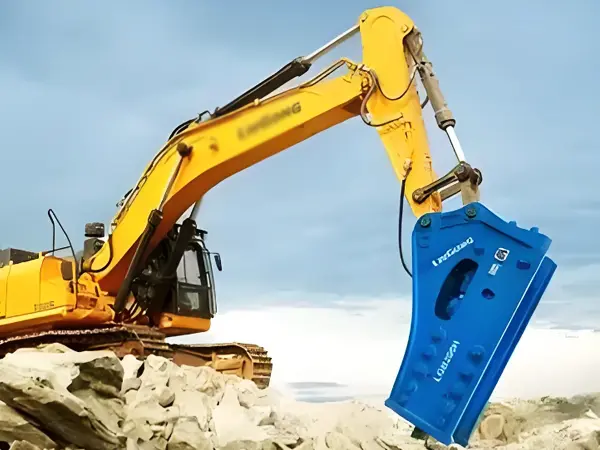Understanding Boom Cylinder Excavators: Key Components and Functions
Release time:
2025-04-11
When discussing boom cylinder excavators, it is crucial to understand their vital role in the realm of construction and engineering machinery. Boom cylinders are hydraulic components that allow excavators to extend their reach and provide versatility in handling different tasks. These cylinders play a pivotal role in enabling the boom arm of the excavator to lift, lower, and extend, facilitating a
When discussing boom cylinder excavators, it is crucial to understand their vital role in the realm of construction and engineering machinery. Boom cylinders are hydraulic components that allow excavators to extend their reach and provide versatility in handling different tasks. These cylinders play a pivotal role in enabling the boom arm of the excavator to lift, lower, and extend, facilitating a wide range of operations from digging trenches to lifting heavy materials.
The hydraulic system is at the heart of the boom cylinder's functionality. Within this system, hydraulic fluid is pressurized to create the necessary force to move the boom. The boom cylinder consists of two main parts: the barrel and the piston. The barrel houses the hydraulic fluid, while the piston moves within the barrel to generate the lifting force. As hydraulic fluid enters the cylinder, it pushes the piston, allowing the boom to move in a controlled manner.
One significant advantage of boom cylinder excavators is their efficiency in various applications. For instance, in excavation tasks, the ability to adjust the boom's angle and reach enables operators to dig deeper and more precisely. This adaptability is vital in a construction landscape where projects often require unique and varying approaches to site preparation and material handling. Furthermore, the robust design of boom cylinders ensures that they can withstand the demanding conditions typically encountered in construction environments.
Maintenance is another key aspect to consider when it comes to boom cylinder excavators. Regular inspections and servicing of hydraulic components are essential for ensuring optimal performance and longevity. Operators and maintenance personnel should keep an eye out for signs of leaks, wear, and tear, particularly in the seals and joints. By addressing these issues promptly, it is possible to avoid costly repairs and downtime, thereby enhancing productivity on job sites.
In addition to maintenance, operators must also be trained in the safe and effective use of boom cylinder excavators. Understanding the limits of the equipment and the proper techniques for operation can significantly reduce the risk of accidents and injuries. Moreover, operators should familiarize themselves with the specific capabilities of the excavator they are using, as different models may have varying hydraulic pressures and reach capabilities.
In conclusion, boom cylinder excavators are indispensable tools in the construction and engineering sectors. Their hydraulic systems enable versatile movement, contributing to the efficiency and effectiveness of various tasks. By prioritizing maintenance and operator training, companies can maximize the potential of their boom cylinder excavators, ensuring they remain reliable assets for any project. Understanding these components not only enhances operational efficiency but also ensures safety and longevity in machinery use.
The hydraulic system is at the heart of the boom cylinder's functionality. Within this system, hydraulic fluid is pressurized to create the necessary force to move the boom. The boom cylinder consists of two main parts: the barrel and the piston. The barrel houses the hydraulic fluid, while the piston moves within the barrel to generate the lifting force. As hydraulic fluid enters the cylinder, it pushes the piston, allowing the boom to move in a controlled manner.
One significant advantage of boom cylinder excavators is their efficiency in various applications. For instance, in excavation tasks, the ability to adjust the boom's angle and reach enables operators to dig deeper and more precisely. This adaptability is vital in a construction landscape where projects often require unique and varying approaches to site preparation and material handling. Furthermore, the robust design of boom cylinders ensures that they can withstand the demanding conditions typically encountered in construction environments.
Maintenance is another key aspect to consider when it comes to boom cylinder excavators. Regular inspections and servicing of hydraulic components are essential for ensuring optimal performance and longevity. Operators and maintenance personnel should keep an eye out for signs of leaks, wear, and tear, particularly in the seals and joints. By addressing these issues promptly, it is possible to avoid costly repairs and downtime, thereby enhancing productivity on job sites.
In addition to maintenance, operators must also be trained in the safe and effective use of boom cylinder excavators. Understanding the limits of the equipment and the proper techniques for operation can significantly reduce the risk of accidents and injuries. Moreover, operators should familiarize themselves with the specific capabilities of the excavator they are using, as different models may have varying hydraulic pressures and reach capabilities.
In conclusion, boom cylinder excavators are indispensable tools in the construction and engineering sectors. Their hydraulic systems enable versatile movement, contributing to the efficiency and effectiveness of various tasks. By prioritizing maintenance and operator training, companies can maximize the potential of their boom cylinder excavators, ensuring they remain reliable assets for any project. Understanding these components not only enhances operational efficiency but also ensures safety and longevity in machinery use.





